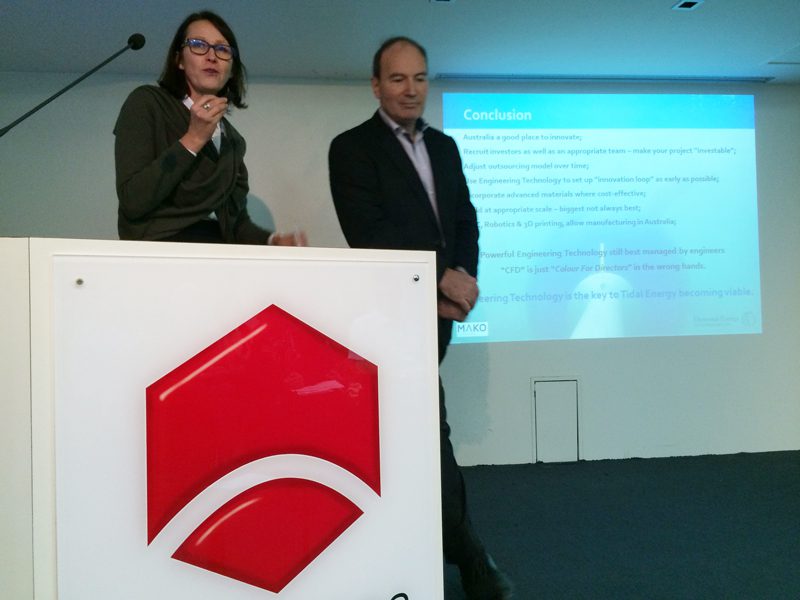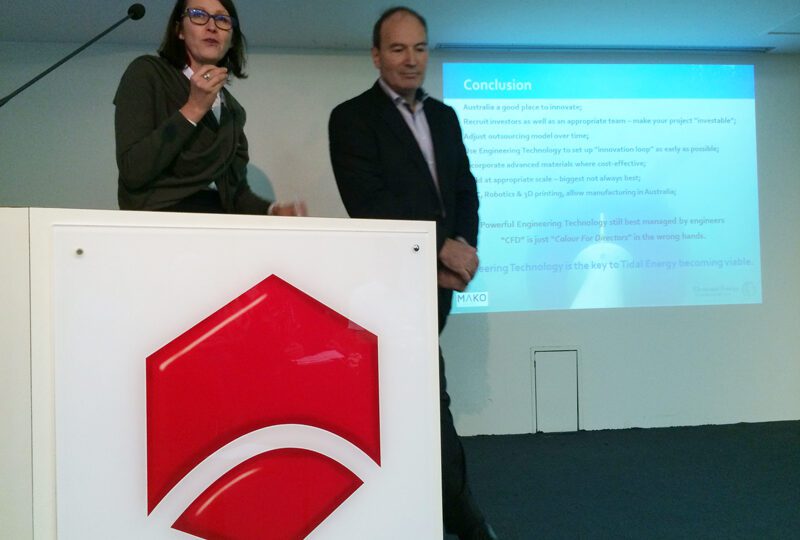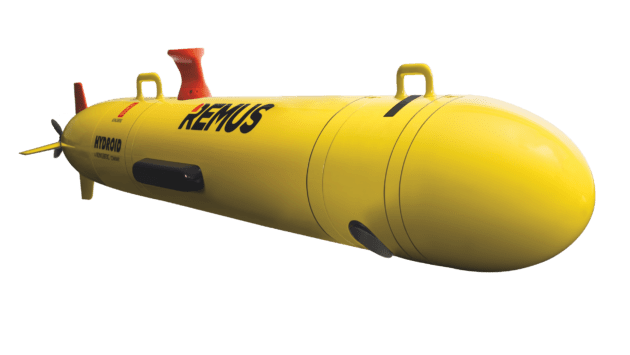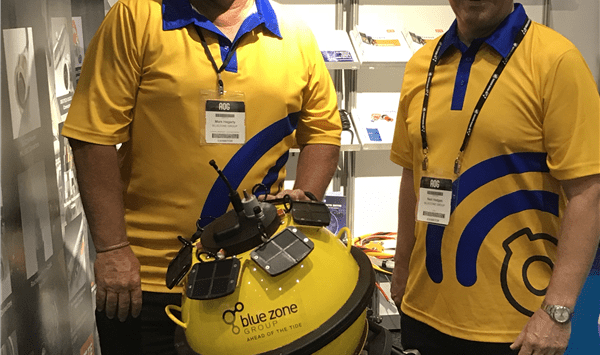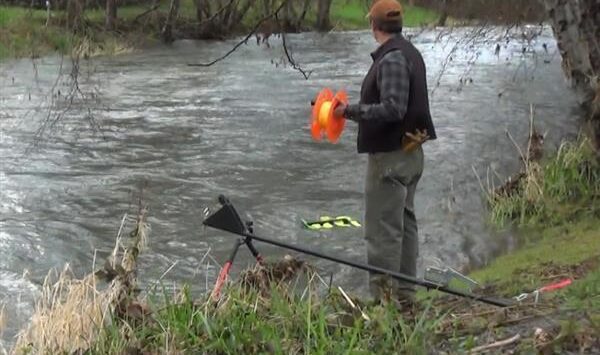Extracting Renewable Energy from the Oceans
Extracting Renewable Energy from the Oceans
A large audience of over 100 gathered on 9 July 2015 for a presentation to the Joint Electrical Institutions Sydney – Engineers Australia, IEEE and IET. The audience heard from two leading Ocean Renewables companies with operations based in Sydney: Elemental Energy Technologies (EET) and BioPower Systems. Deputy Chair of the IEEE Ocean Engineering Committee NSW Section, Dr. Gunilla Burrowes, welcomed the attendees and set the theme as “Extracting Renewable Energy from the oceans? What will it take for the sector to live up to its potential?
Douglas Hunt, Managing Director of Elemental Energy Technologies (EET) was the first presenter. Doug gave an overview of the rapid-development process that is currently being implemented at EET for the development of their MAKO turbines for generating power from ocean currents, tides and river flows. This process included advanced tools such as 3D modelling using Rhinoceros, optimisation using Grasshopper and test assembly of components using a Stratasys 3D printer. EET is currently set to work on a Kuka robot to complete the development cycle with rapid manufacture of full-size parts for the test. Doug said that the rapid-development process at EET would be key to breakthroughs in technology for ocean renewables development and that the smart engineering team working on the project was a testament to the ability of engineers in Australia and what could be achieved with innovative development processes.
Dr. Tim Finnigan, CEO of BioPower Systems then presented on the BioWave device now being constructed for deployment at a wave energy site near Port Fairy, Victoria in late 2015. Tim described the evolution of the BioWave device, early testing and development into a full-size 250kW generator. Working with partners, BioPower has developed the technology to convert the oscillating motion of the BioWave to electric power that will be grid-connected at Port Fairy. Tim noted that many ocean renewables designs had aimed for simplicity in subsea design, but in the BioWave design, the subsea components would be highly sophisticated, capable of measuring currents using an ADCP and avoiding storm events by sinking to the ocean floor.
The session ended with a lively question and answer period and many attendees remained after the talks for further discussions with Doug and Tim. Gunilla thanked both the presenters for their preparation and for making the evening a highly successful meeting.
BlueZone Group’s, company UVS, is proud to be a supplier to both EET and BioPower Systems. The future is challenging for ocean renewables, however, BlueZone looks forward to assisting customers in overcoming obstacles to a future where ocean renewables will be a part of the global energy mix.
